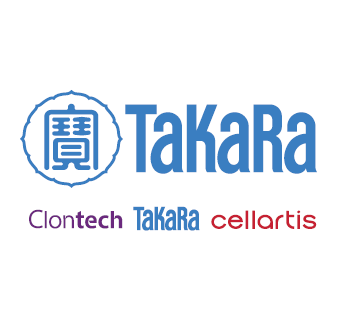Lenti-X Actin Dynamics Monitoring Kit
Lenti-X Actin Dynamics Monitoring Kit
Use this kit to monitor the highly dynamic behavior of the actin filament system in live cells. The Lenti-X Actin Dynamics Monitoring Kit includes lentiviral vectors encoding actin fusions to DD-AcGFP1 (green, destabilized) and mCherry (red), as well as the DD's stabilizing ligand Shield1. Once your cells have been infected with the included vectors, DD-AcGFP1-Actin is continuously targeted for degradation by the proteasomes, unless the cells are cultured in medium containing the stabilizing ligand Shield1. By contrast, mCherry-Actin (which does not contain the DD) has normal stability and is constitutively present in the cell.
Adding and removing Shield1 creates a "pulse-chase" like set of conditions which allow you to monitor how newly synthesized, Shield-stabilized DD-AcGFP1-Actin (green) is integrated into the existing (red) mCherry-Actin actin filament network.
Overview
- Live-cell monitoring of actin dynamics
- Easy-to-use, dual-color assay
Applications
- Labeling actin filaments in cells
- Monitoring actin dynamics in live cells
AcGFP1 is ideal for multicolor and fluorescence microscopy applications

AcGFP1 is ideal for multicolor and fluorescence microscopy applications. AcGFP1 and DsRed2 protein fusions were transiently transfected and visualized by fluorescence microscopy. Panel A. pAcGFP1-Mito (mitochondria) and pDsRed2-Nuc (nucleus) in HEK 293 cells. Panel B. pAcGFP1-Golgi (Golgi apparatus) and pDsRed2-Nuc (nucleus) in HEK 293 cells.
Organelles targeted by the subcellular localization vectors

Organelles targeted by the subcellular localization vectors.
Subcellular localization vectors encode fusions of fluorescent proteins with localization signals or subcellular structural proteins, which target the fluorescent protein to a specific organelle or subcellular structure

Subcellular localization vectors encode fusions of fluorescent proteins with localization signals or subcellular structural proteins, which target the fluorescent protein to a specific organelle or subcellular structure. The vectors are available in a variety of organelle- and cytoskeleton-targeted color variants.
Observe actin filament remodeling using the Lenti-X Actin Dynamics Monitoring Kit

Observe actin filament remodeling using the Lenti-X Actin Dynamics Monitoring Kit. Actin filaments are completely remodeled in HeLa cells in less than 1 hr. Panel A. Self-assembly of actin filaments occurs at the plus end of an existing actin filament as monomeric actin is incorporated. Conversely, disassembly occurs at the minus end where actin monomers depolymerize from the filament, causing a continuous rearrangement of the actin filament network. HeLa cells were infected with constructs encoding mCherry human alpha-Actin and DD-AcGPF1 human alpha-Actin. Cells were fixed using 4% paraformaldehyde and imaged with a 40X objective. Fluorescence micrographs were taken 1 hr after addition of Shield1 (Panels E–G) or without Shield1 (Panels B–D). In the absence of Shield1, DD-AcGFP1-Actin was degraded quickly (Panels C & D) despite a normal, mCherry-labeled actin filament network (Panels B & D). In the presence of Shield1, DD-AcGFP1-Actin was stabilized and present in the actin filament network along with mCherry-labeled Actin (Panels E–G). Our results are in agreement with a previous report that the actin filament network rearranges completely in 1 hr in PtK2 epithelial cells, but we used the extremely simple ProteoTuner-based method, rather than the extremely laborious microinjection method.


